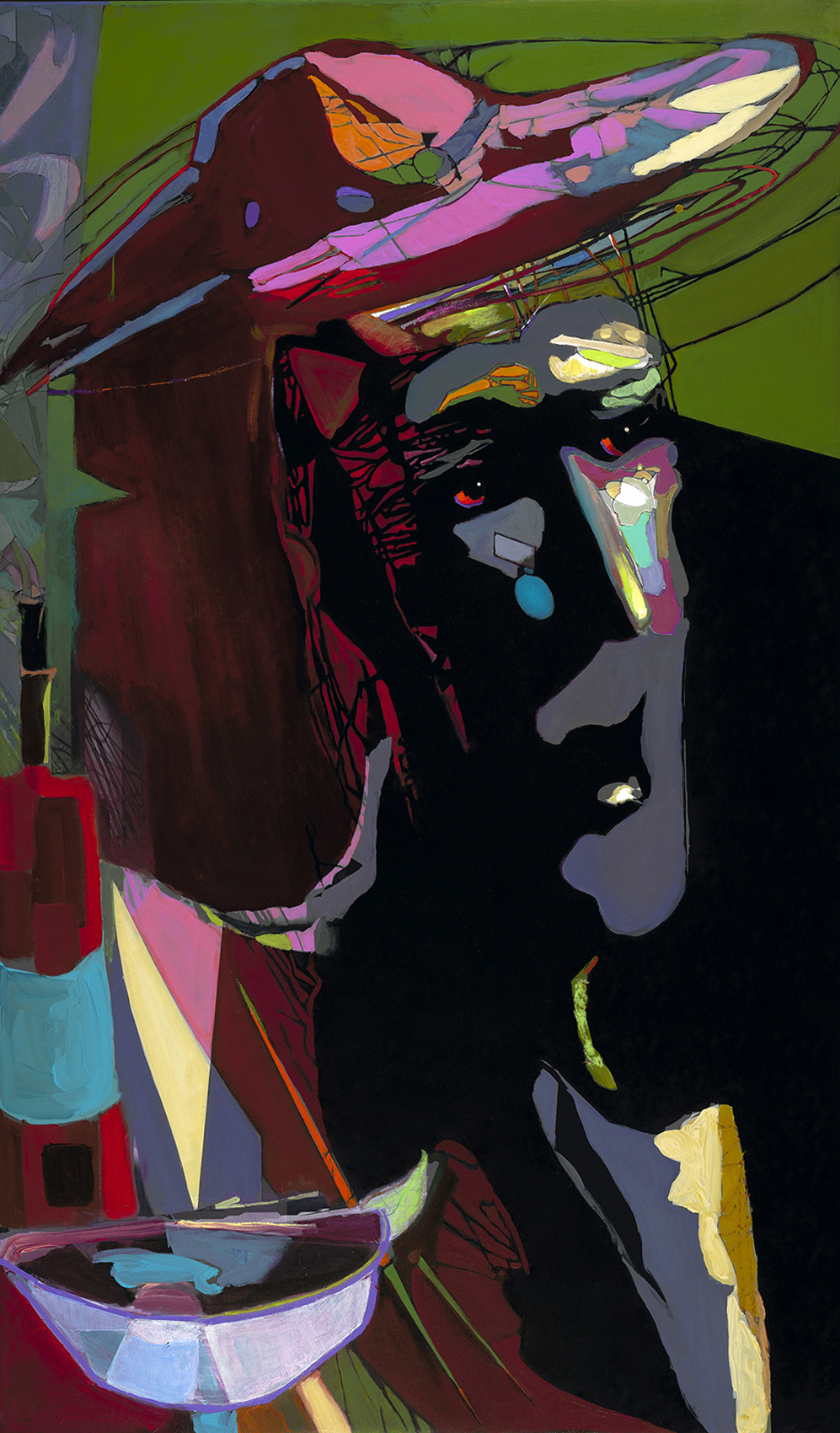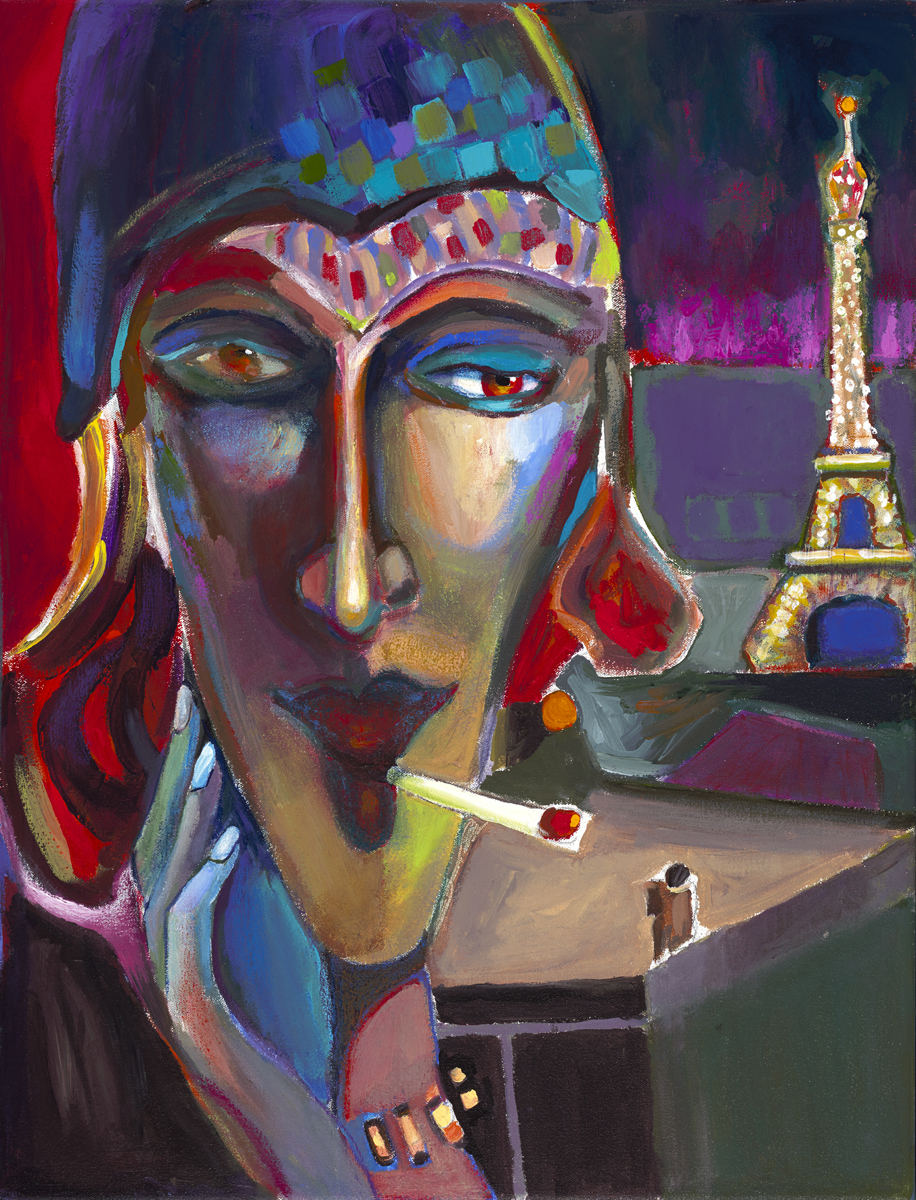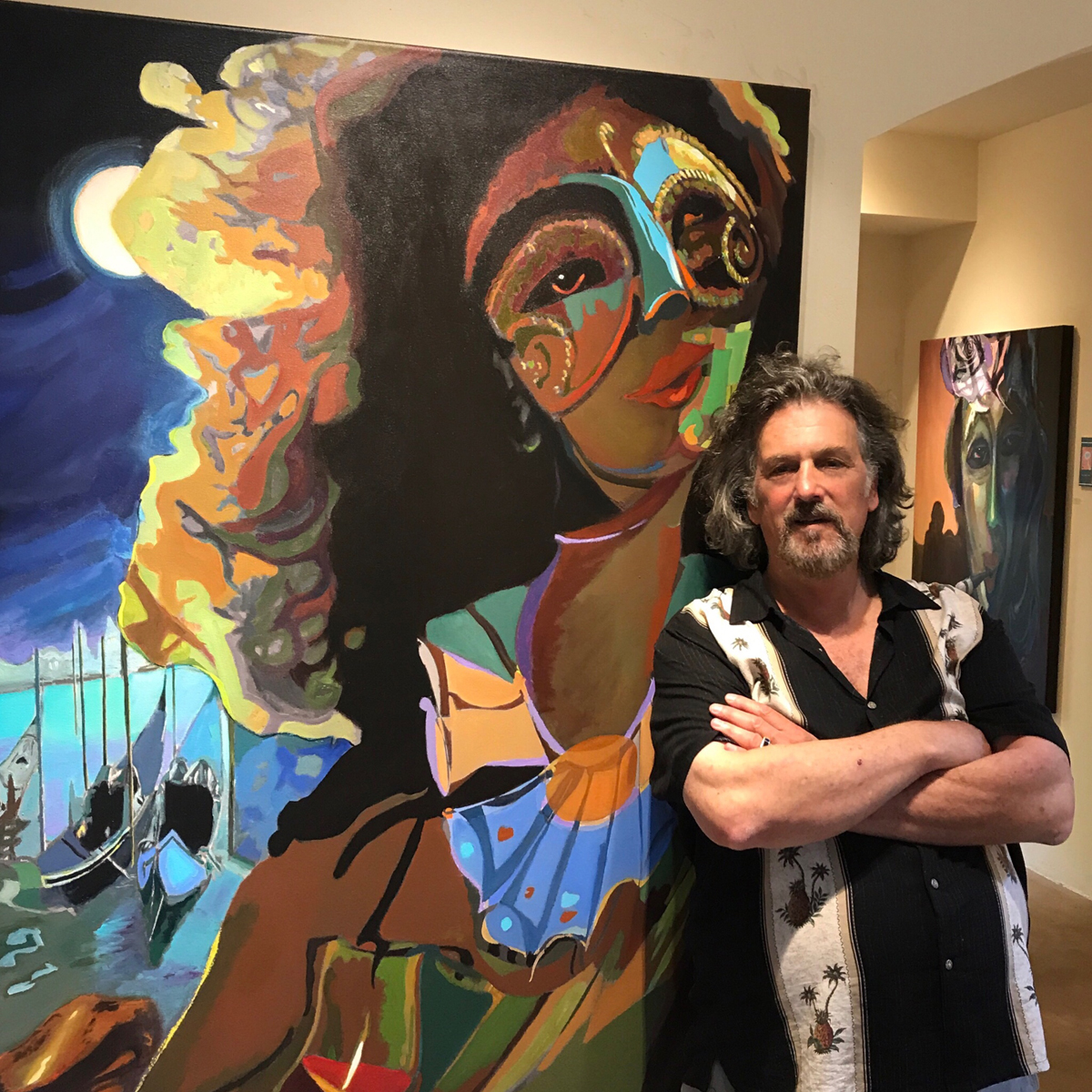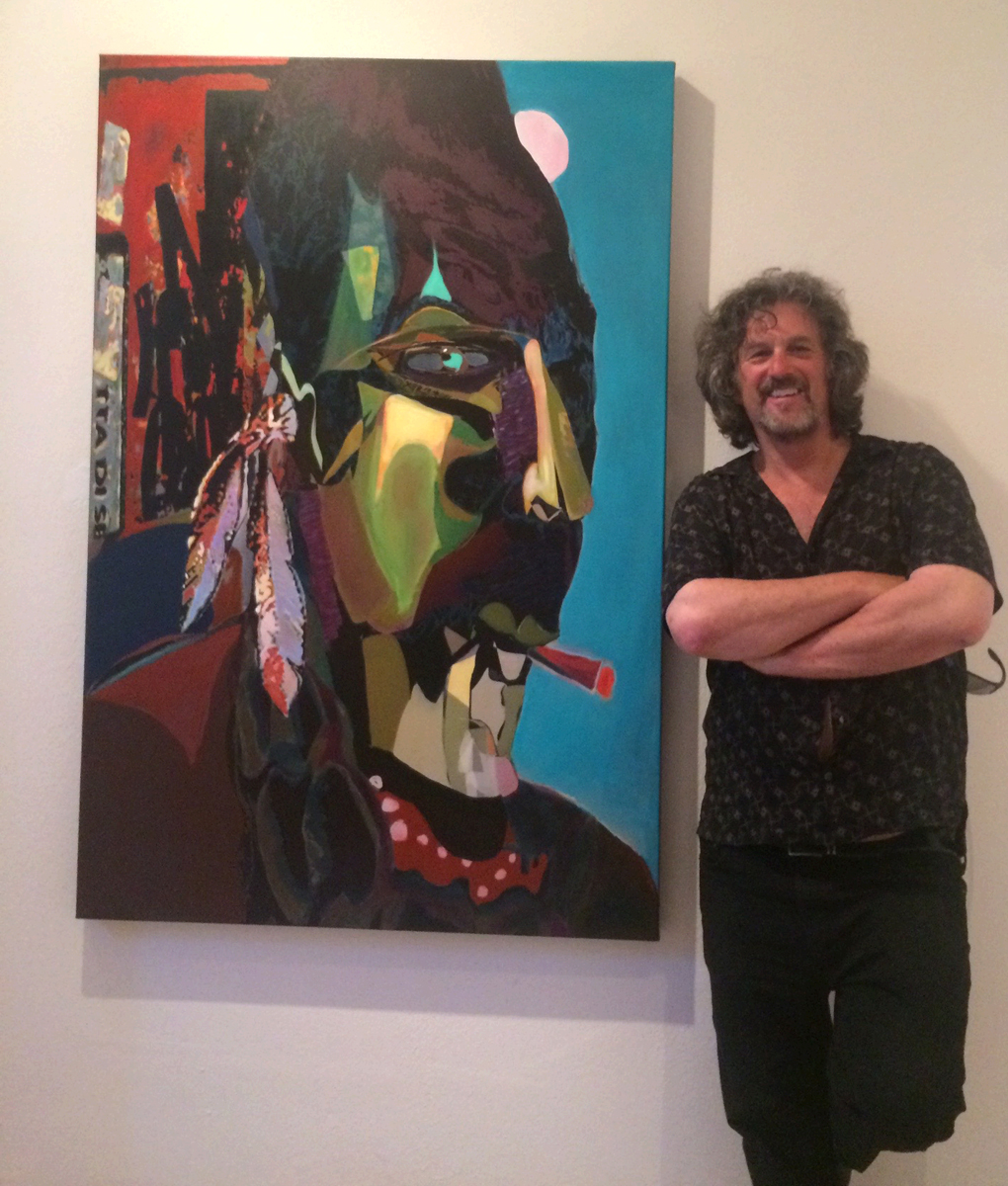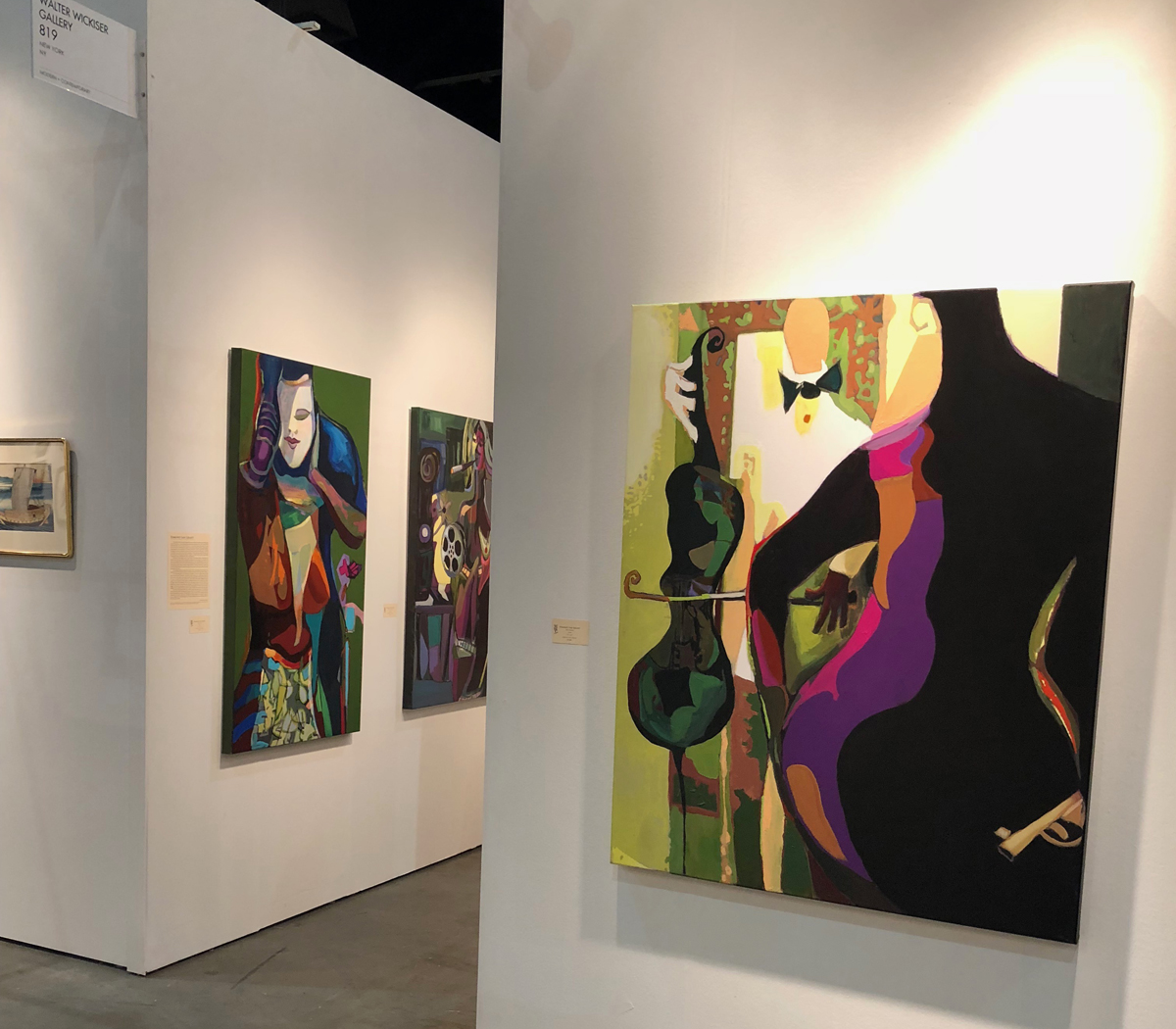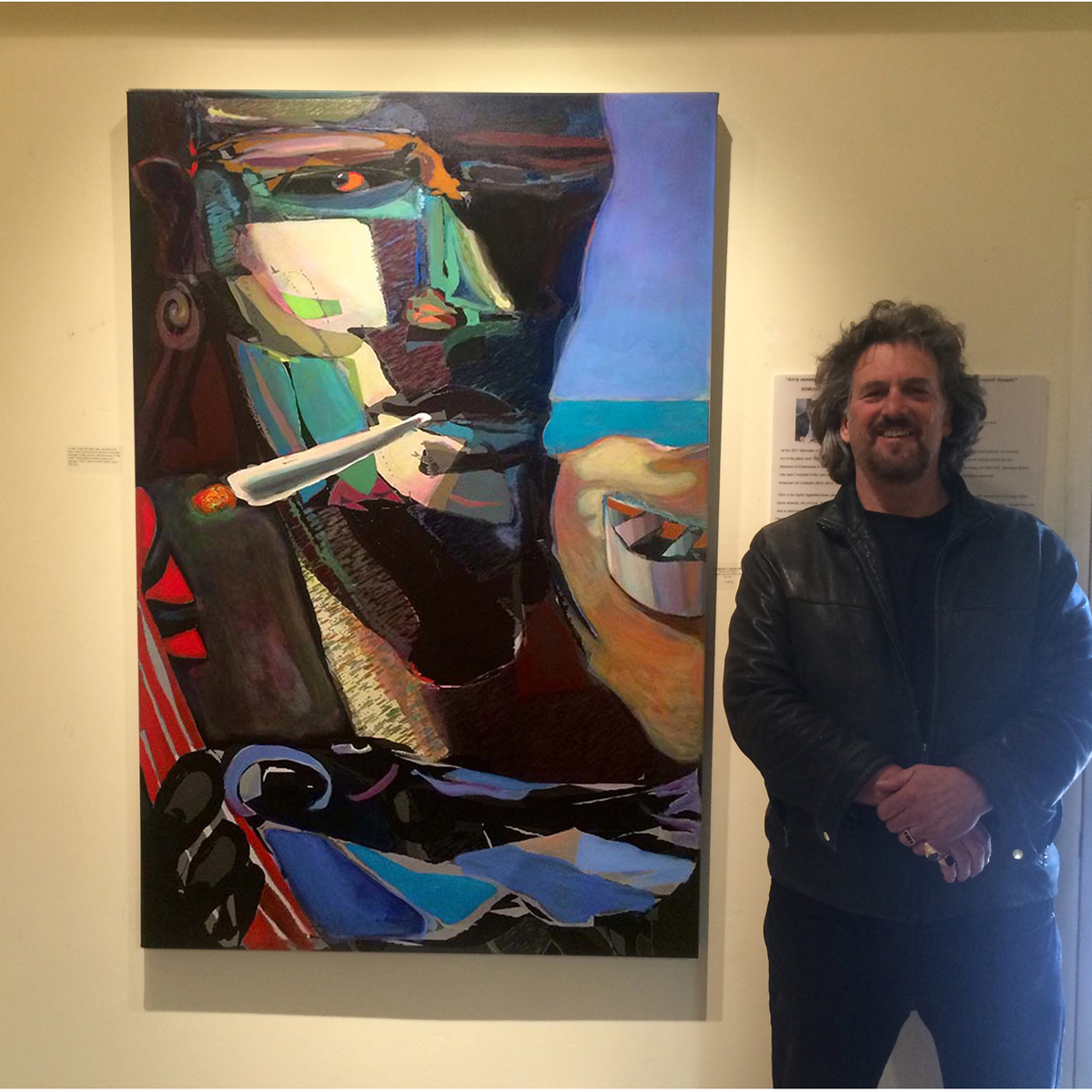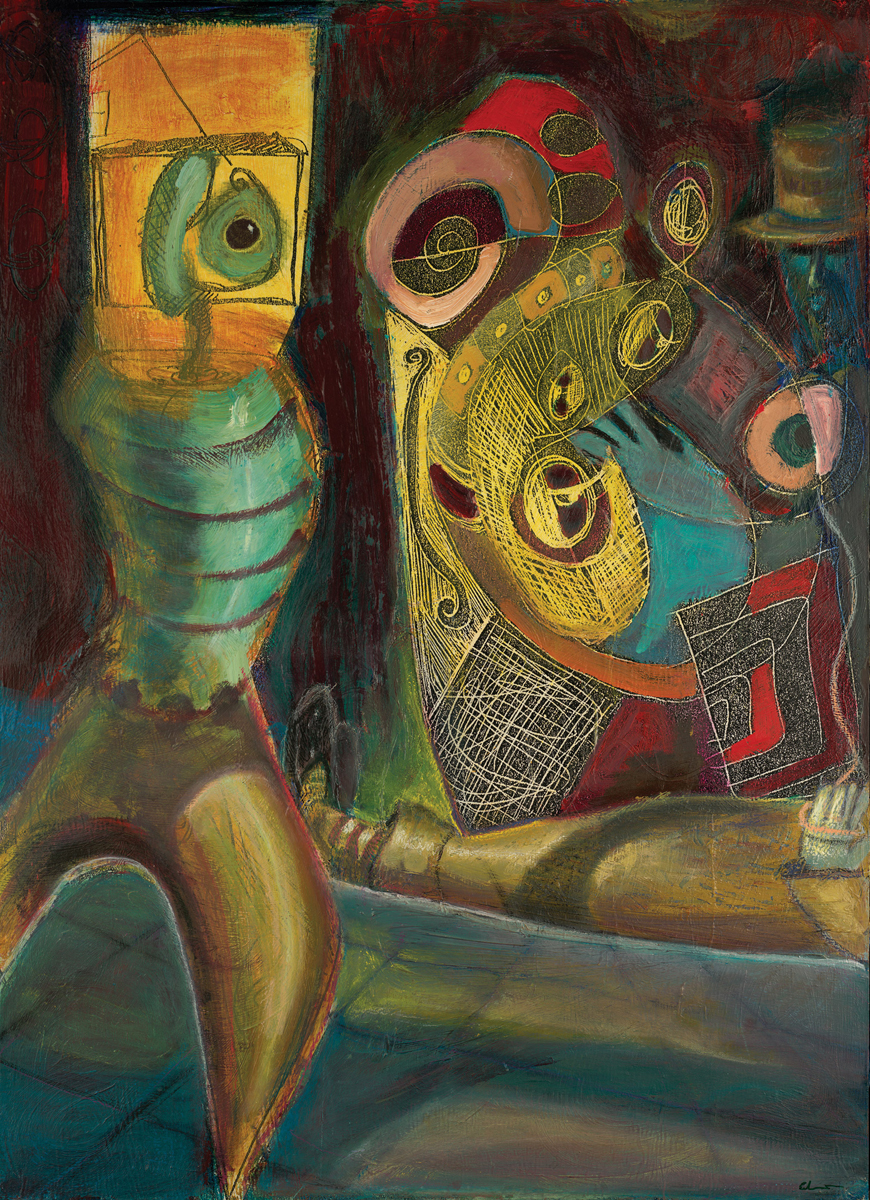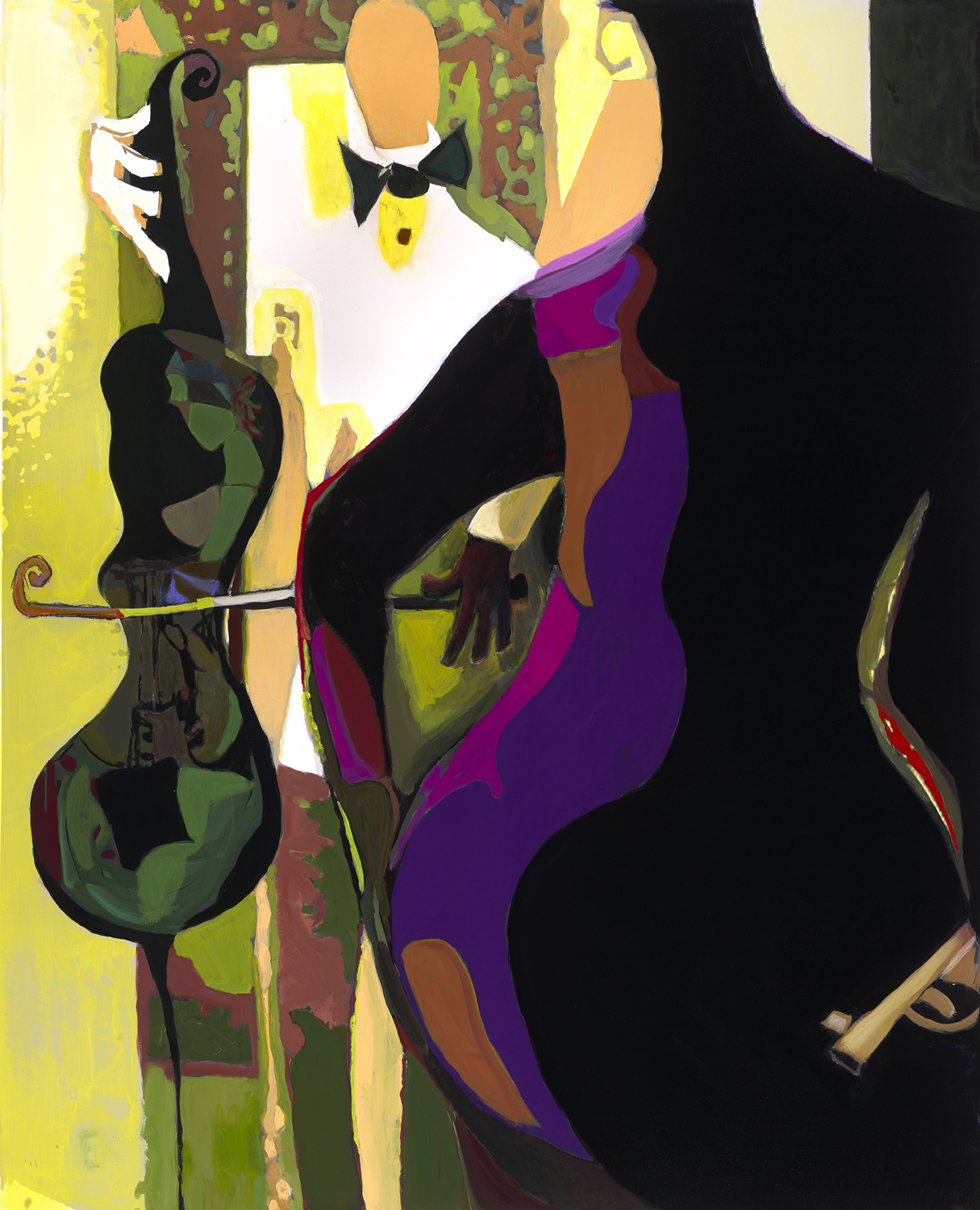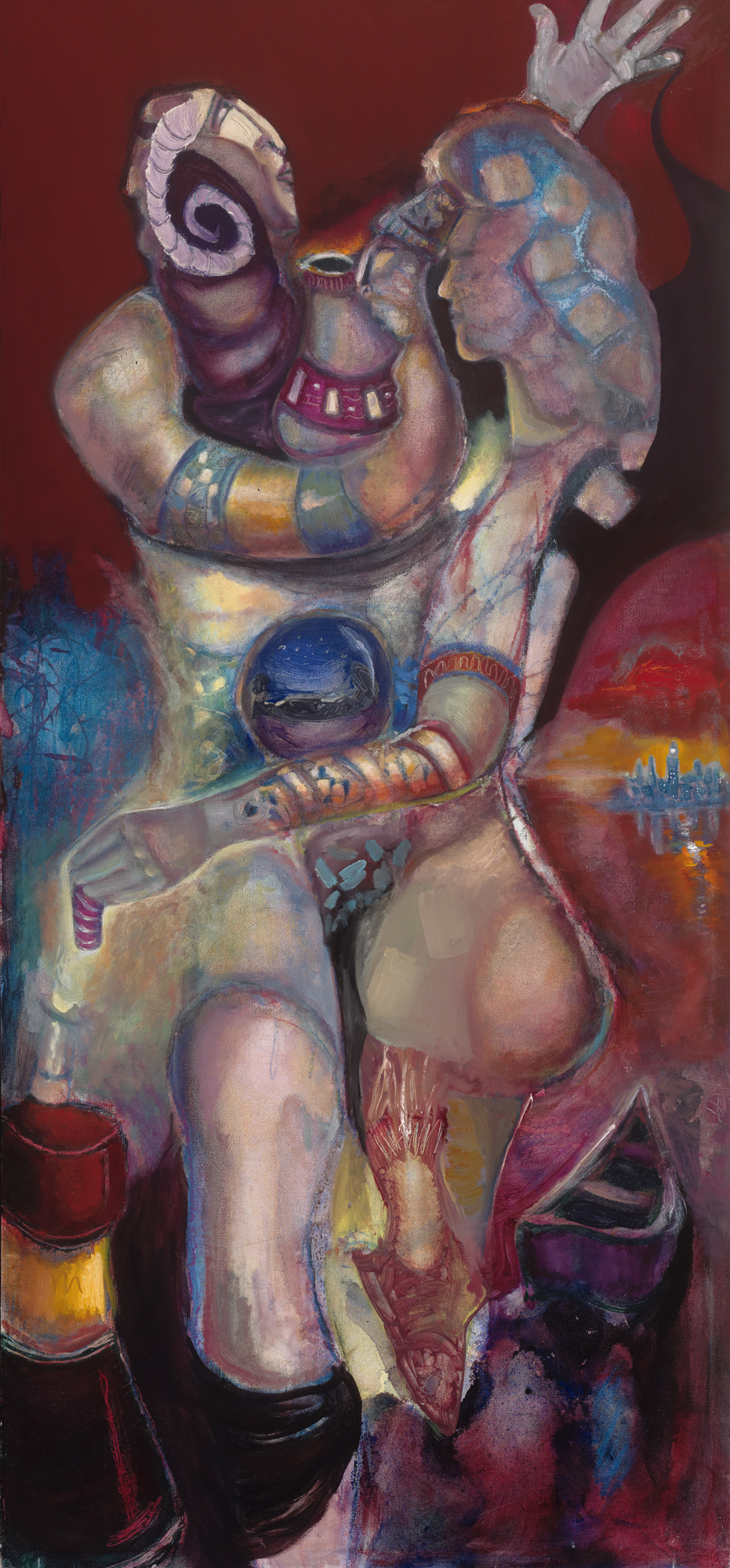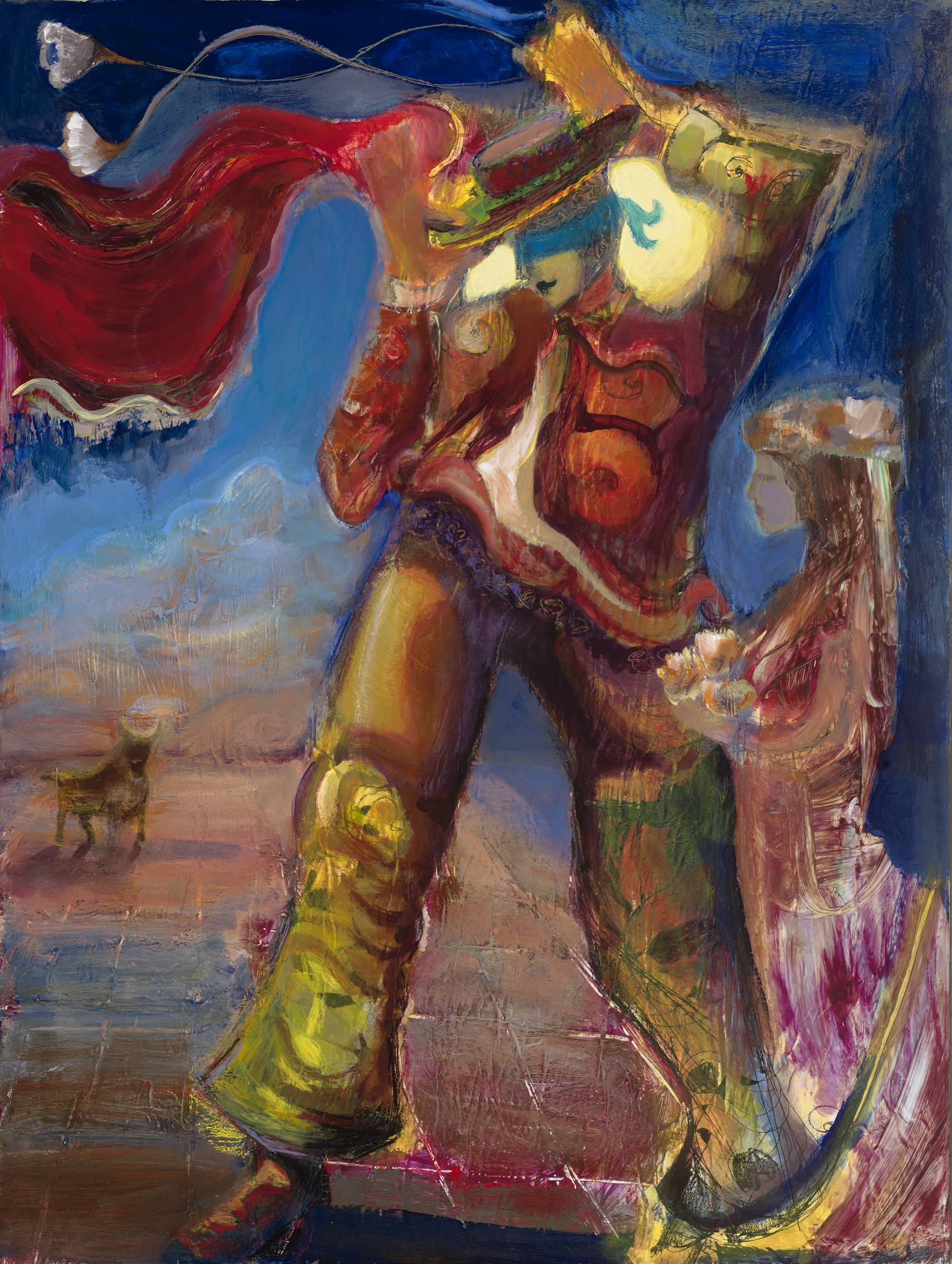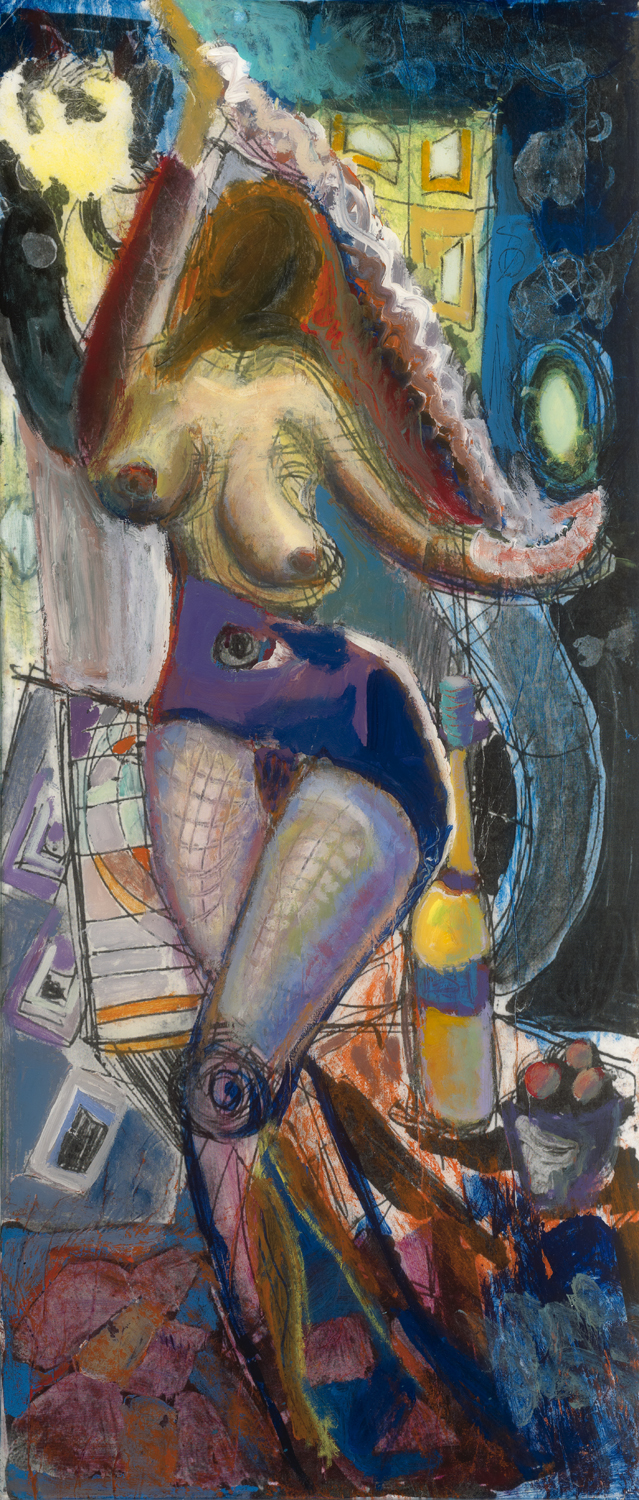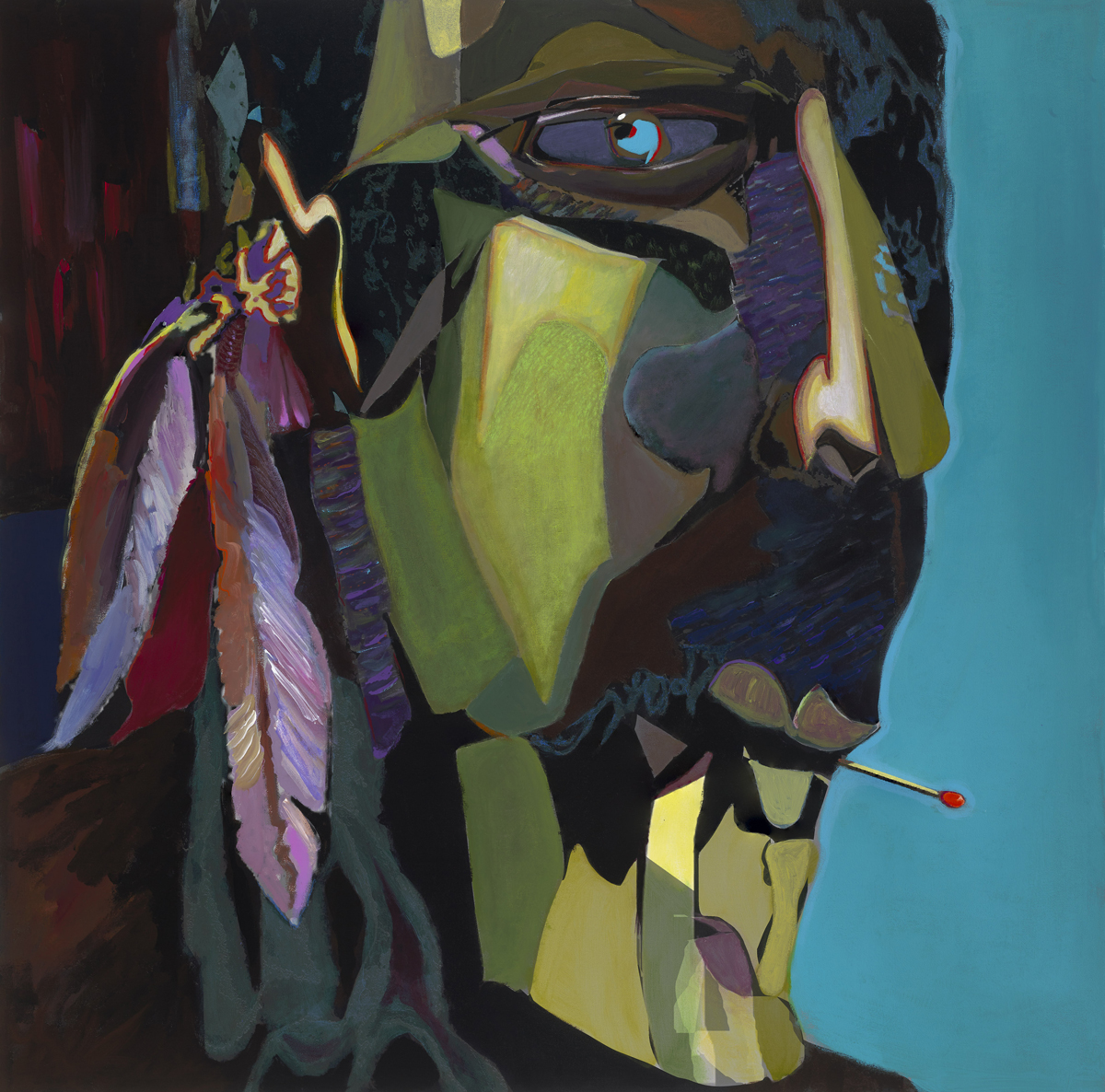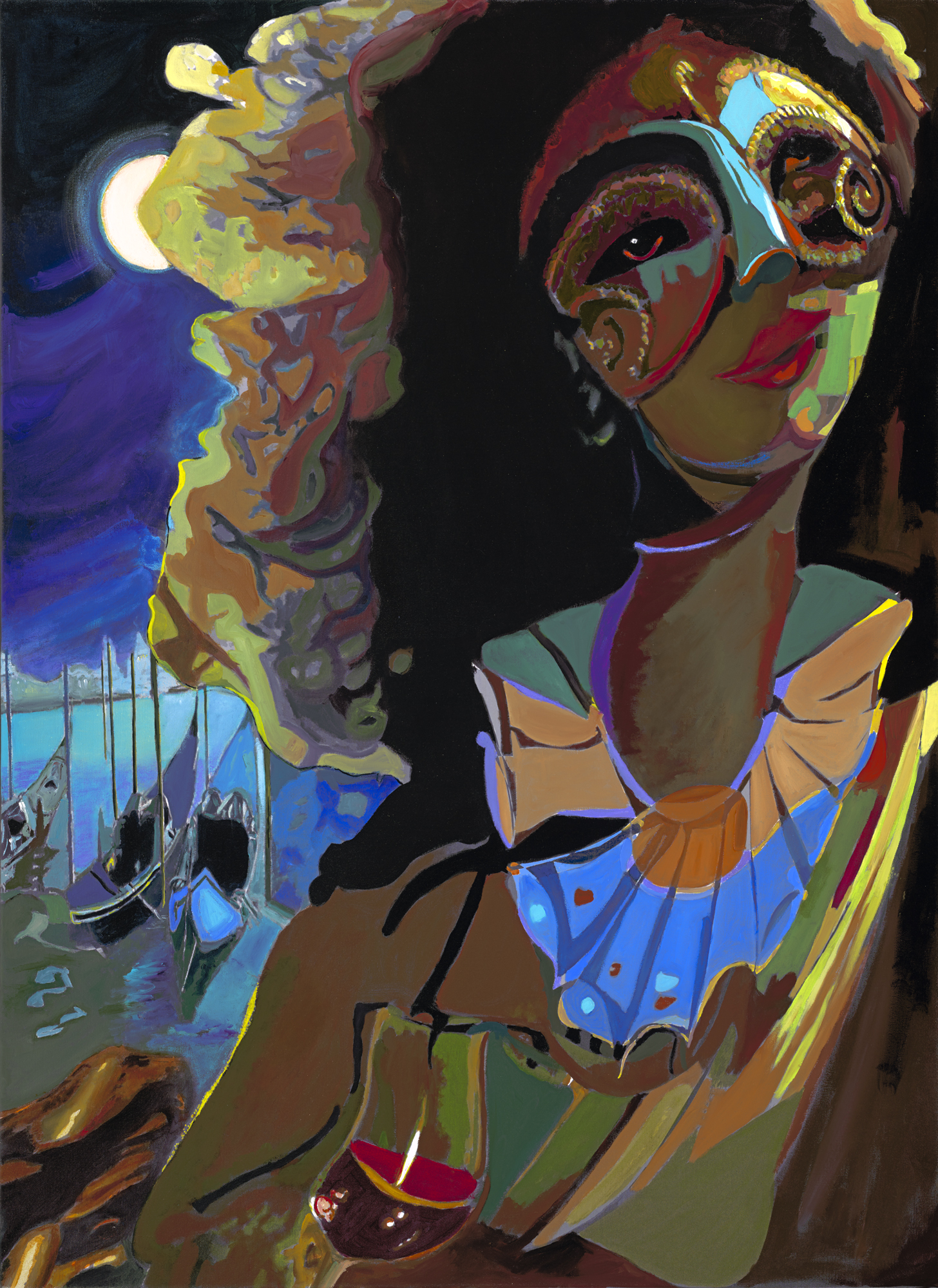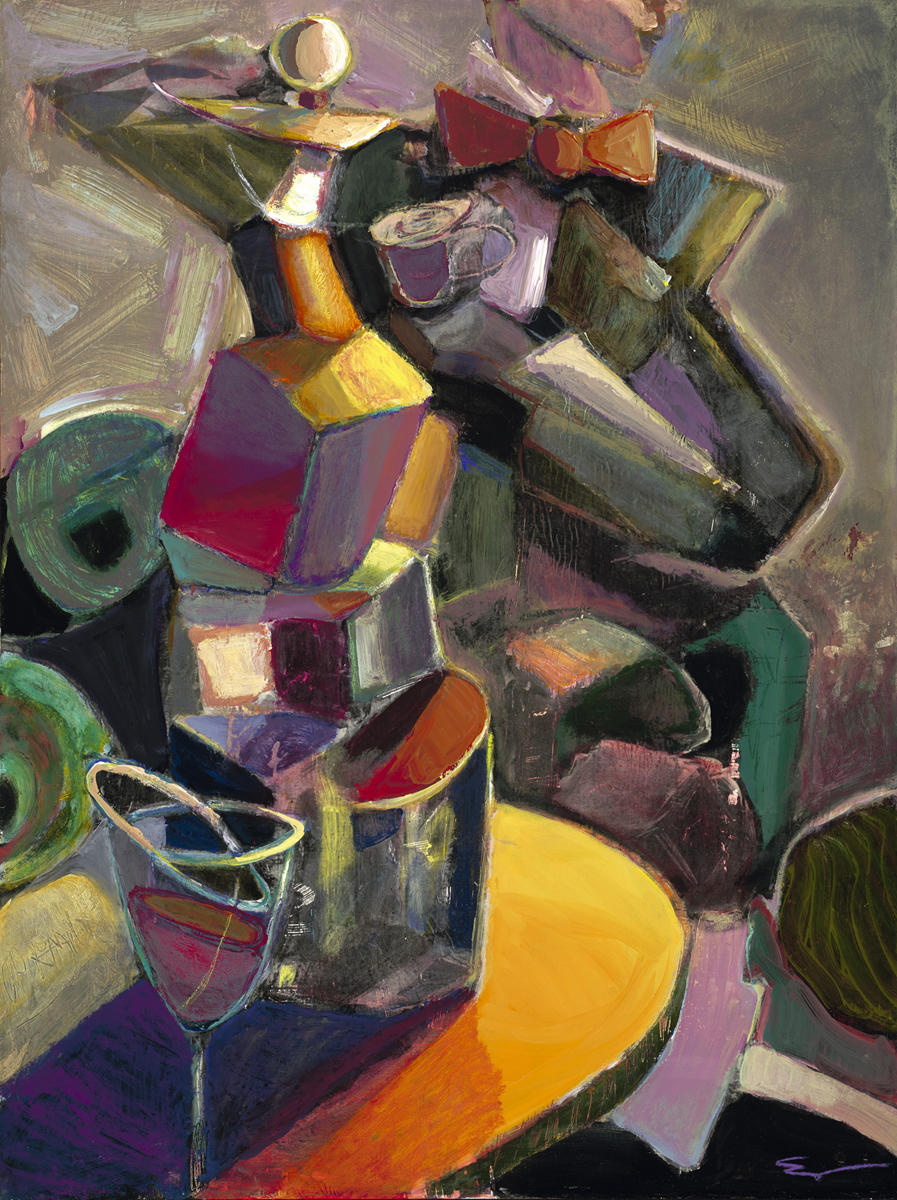Interview with Edmund Ian Grant
Edmund was born in San Mateo California in 1950 and presently, lives and paints in the Napa Valley. He is an Internationally collected, award winning self- taught artist whose extensive exhibitions over the last 30 years include shows in many USA cities including Los Angeles, Miami, Dallas, San Francisco and New York, and International cities – Florence, Milan, Monte Carlo, Tel Aviv, Venice, London and Paris.
He has exhibited along with some of the world’s top galleries at many prestigious art fairs including The LA Art Show, Art Aspen, Art Monaco, and Concept Art Fair-Miami during Art Basel week. Among his numerous awards is the Leonardo Award, First Prize in Painting, the top honor at the International Biennale of Chianciano 2015 and most recently, Second Prize in Painting at the London Art Biennale 2019. His work is in numerous catalogues, art books and publications including a critical essay by world-renowned art historian and art critic Edward Lucie-Smith.
Lucie -Smith states, “Edmund Ian Grant’s images are powerful… these monumental heads, cigarettes clutched between their lips, belong to the raffish, late night world of the traditional jazz club………In the late 19th and early 20th century radical artists often presented low life subjects in quasi-monumental forms. Van Gogh and Toulouse-Lautrec were the pioneers who preceded Picasso in this paradoxical endeavor. It is fascinating to see how, pretty much a hundred years later, Edmund Ian Grant finds a new twist to the theme, and makes his images speak to us in demotic American.” Edmund has gallery representation in Manhattan, London and Berlin.
Could you please introduce yourself and tell us how you started in the arts? and your first experience in art making?
I was born November 14, 1950 at Mills Hospital in San Mateo, California at the time a middle class suburb twenty miles south of San Francisco on what is called the Peninsula, now part of the infamous Silicon Valley. Presently, I live and create in the Napa Valley, the heart of the California wine country about 75 miles north of San Francisco. I have had many career incarnations including being a professional Dentist.
I was immersed in the arts at a very early age due to the artistic and musical influence of my parents. My father an independent businessman born in Brooklyn, New York was a violin player in his youth and loved all types of music and permeated a sort of “Rat Pak“ sensibility. The Music of Sinatra, Sammy Davis Jr., Louis Prima and Kellie Smith or Xavier Cougat could be heard in his 1956 Lincoln Continental, as he played the bongo-drum-steering-wheel, or at home on his new stereophonic music system. My mother, a dedicated housewife and voracious reader was an absolute intellectual and loved the performing and visual arts. There was always a Play Bill on the coffee table, a museum guide for an Art show at the De Young Museum and the Metropolitan Seminars in Art, by John Canaday, with its beautiful color plates of Masterpieces like Woman with Chrysanthemums by Degas, or Madame Renoir, by Renoir hanging out in the family bookshelf. I loved to examine these books and then try to emulate in a very “doodlesque” way sometimes right on the pages of my Mothers prize art books. It was an artistic primordial brew that led me at ten years of age to declare, to the bewilderment of my parents, I wanted to be an artist. But as would be expected in mid-century America suburbia, was rebuked, “first you need to make a living!”
But actually, it all started with music, in the third grade at the age of seven, as I watched and most importantly listened to the soundtrack of the American TV show Peter Gunn. It was that soundtrack, by the renowned composer Henri Mancini, with such songs as Sorta Blue, Dreamsville and of course the theme song of Peter Gunn with its incredible alto saxophone solo that got my attention. My dream was born, to be able to play that scream’ in alto saxophone solo and live my life as an artist. I began playing the saxophone at seven and continued through my collegiate years eventually, becoming a working musician studying the works of the jazz greats including Charlie Parker, John Coltrane and Miles Davis while continually doodling and dreaming of becoming a great painter.
Having obtained a rather useless undergraduate degree I soon realized after a very short career in finance and several years of music “gigging” that I should heed the advice I received at ten and find a career that gave me a steady income. I went back to graduate school and was accepted to Dental school and proceeded to become a dentist graduating form the USC School of Dentistry in 1980. Ironically, this was my formal art training as the school forced me to draw the human dentition from every angle and also sculpt to perfection the full compliment of teeth out of small blocks of wax. Essentially dental school instructed me in aesthetics, color, visual balance, and form.
In the mid 1980s while I was a dentist, I pursued the arts and taught myself to paint. At first, the paintings centered on the idea of Jazz and its characters; my very first painting was a Portrait of famed jazz great Miles Davis pastel, ink, and charcoal in 1986.
How would you describe yourself and your artwork?
I am a self-taught artist and would describe myself as very dedicated to my craft always trying to improve, explore new avenues, learn and challenge accepted norms; push the envelop experimenting with colors, line, textures and new media. I have emerged as a storyteller, an intuitive colorist, an improvisational painter who is best described as an Abstract Figurative Expressionist with some links to Cubism and Fauvism thrown in for good measure. The critics say it best:
Robert P. Metzger PhD. art critic, art historian and former Director Emeritus of the Reading Museum of Pennsylvania experiences Grant’s work to be “…hauntingly compelling narrative paintings (which) are psychologically edgy and expressionistic….” his paintings…. recall artists of the early 20th century such as German Expressionist painter Ernst Kirchner and school of Paris Spanish sculptor Pablo Gargallo
Edward Lucie-Smith world renowned art historian and art critic regarded as one of the most prolific and widely published writers on art states in his critical review of Edmund’s New York solo show at the Walter Wickiser Gallery in 2016:
“Earlier commentators on Grant’s work have noted the link to German Expressionist art. It is possible, for example to see quite a close parallel between these heads and portraits by Karl Schmidt-Rottluff. At the same time, however, there is more than a trace of the faceted planar modeling one finds in Picasso’s Cubist and post-Cubist studies of heads. Through the link to Cubism, there is also a further link to the tribal African heads and masks that inspired some of the forms Picasso used in his seminal Demoiselles d’Avignon….. In the late 19th and early 20th century radical artists often presented low life subjects in quasi-monumental forms. Van Gogh and Toulouse-Lautrec were the pioneers who preceded Picasso in this paradoxical endeavor. It is fascinating to see how, pretty much a hundred years later, Grant finds a new twist to the theme, and makes his images speak to us in demotic American.”
In D.Dominick Lombardi’s Huffington Post article “A Trio of Tangents” Lombardi describes Edmunds artwork: “Being a jazz musician in addition to a visual artist, we see an improvisational mindset in Grant’s style that puts forth a multitude of visual prose and passages….. There are a number of Grant’s works that include musicians, including Tossin’ Dem Bones (2013), where dice (bones) is being thrown behind a soulful trumpeter. What is most interesting about this particular narrative is the artist’s use of visual space, the distortion of the forms and the dynamics of the composition that make the whole thing ‘off’ in a very cool and compelling way. It reminds me quite a bit of what was coming out of West Germany in the 1980’s when artists like the Neo-Expressionists Jorg Immendorff and Helmut Middendorf were making themselves known here in the U.S. as the next wave of bold, figurative, narrative painters. Aside from the modified cubist style that Grant features, it is impossible to look at his art without thinking of Picasso, especially with the mixed media painting titled The Stain of Humanity (2016), when one notes the brightly shining lamp or candle that is featured as a primary element within the composition, and the shadow of a bull in the rather quiet background.
Where do you get your inspiration from?
At first, my inspiration came from my musical background especially Jazz music paintings like Be Bop, Horn of Plenty, Samba, Blow ‘in Out The Good Vibes, Jazzland, Straight Ahead, and Here’s that Rainy Day are all based on musical interactions and themes. As I created more and more art, I studied the masters for inspiration like Cezanne, Van Gogh, Dali and Picasso to name a few. Each artist would bring me insight and I would attempt to extrapolate off of certain aspects of their works that attracted me and make this my own. I learned color and texture from Van Gogh. I learned about composition and pushing the envelop from Picasso. My inspirations for color also came from the post impressionists like Gauguin, Toulose-Lautrec and Cezanne. Soutine taught me about expressive use of paint and composition and Chagall inspired me to use magical colors and themes, But Going to Salvador Dali’s home in Spain made a deep impression on me. Being in Dali’s studio was a great inspiration for living life as an artist, seeing his last two paintings on the easel — unfinished — was remarkable. He was still working up until the day he left this world.
Presently, I am inspired by the absolute beauty of the randomness of Nature and the power greater than all else, which has created this wonderment.
What emotions do you hope the viewers experience when looking at your art?
I try to focus on the way something makes me feel and translate this into color, movement, rhythm, and light. Many of my paintings are narrative, some are ironic while others are whimsical, and others more abstract but the common thread is my passion for life and my passion to make art. Basically, I hope the viewer feels this passion and my work touches them in a way that makes them reflect on the world around them or transports them to a different reality. I don’t really care about what type of emotions the viewer feels just that they feel something strongly with passion that touches their soul.
When do you know that an artwork is finished?
This is a tough question but it is usually an intuitive process over time. It is when I feel the work has visual balance; it just feels right. It may be in a day or a couple of hours and then it can be weeks to months. At first, when I think a painting is complete I will set it aside for a period of time and look at it with fresh eyes in a week or two or even a month or two. Then I can be more objective about the works completion.
What has been the most exciting moment in your art career so far?
My first work of art as a painter was the Portrait of Miles Davis done in 1986. Ironically, In June of 2013, I was chosen to exhibit at the Napa Valley Museum, Jazzland and Other Stories (June 2013) which was held in conjunction with the late famed jazz trumpeter Miles Davis’ first USA Museum show of his paintings Art of Cool. That was pretty crazy to come full circle and exhibit along side Miles Davis work with my first painting a portrait of Miles in the show. Kristie Sheppard, the Napa Valley Museum’s Executive Director said “We chose Grant’s work specifically to be on display during Miles Davis: The Art of Cool because Grant’s art can be viewed as the visual manifestation of jazz – a perfect accompaniment to Davis’ exhibition.”
Equally as exciting was to be critically reviewed by Edward Lucie-Smith regarded as the most prolific and the most widely published writer on art who called me a powerfully original visual artist and compared my recent works to what Toulouse-Lautrec, Van Gogh and Picasso were doing with monumental heads “ his paintings, therefore, despite their embrace of new technological means, belong to the canonical history of the Modern Movement, which now stretches back for more than a century.”
How long does it take to produce one work?
It is extremely variable some works are quick while others can take months on average 3 to 4 days to two weeks depending on the size of the work However, larger works can take months even years to complete.
What exciting projects are you working on right now? Can you share some of the future plans for your artworks?
Right now I am working on paintings for the Seattle Art Fair in August 1-4 2019 where my work will be exhibited by the Walter Wickiser Gallery of Manhattan .In addition, I am working on new concepts all the time and will be exhibiting at upcoming shows in LA and NYC in 2020.
Do you have any upcoming events or exhibitions we should know about?
The Seattle Art Show 2019 August1-4, 2019, a solo show at the Famed Del Dotto Piazza Winery in the Napa Valley sometime in the Spring of 2020, the LA Art Show January 2020, Art on Paper 2020 April 2020 during Armory week NYC and possible solo show in NYC
Where do you see your art going in five years?
Hopefully, keep growing internationally into many public and private collections including museums
Website:https://www.edmundiangrant.com
Facebook: https://www.facebook.com/edmundiangrant
Instagram: https://www.instagram.com/edmundiangrant


